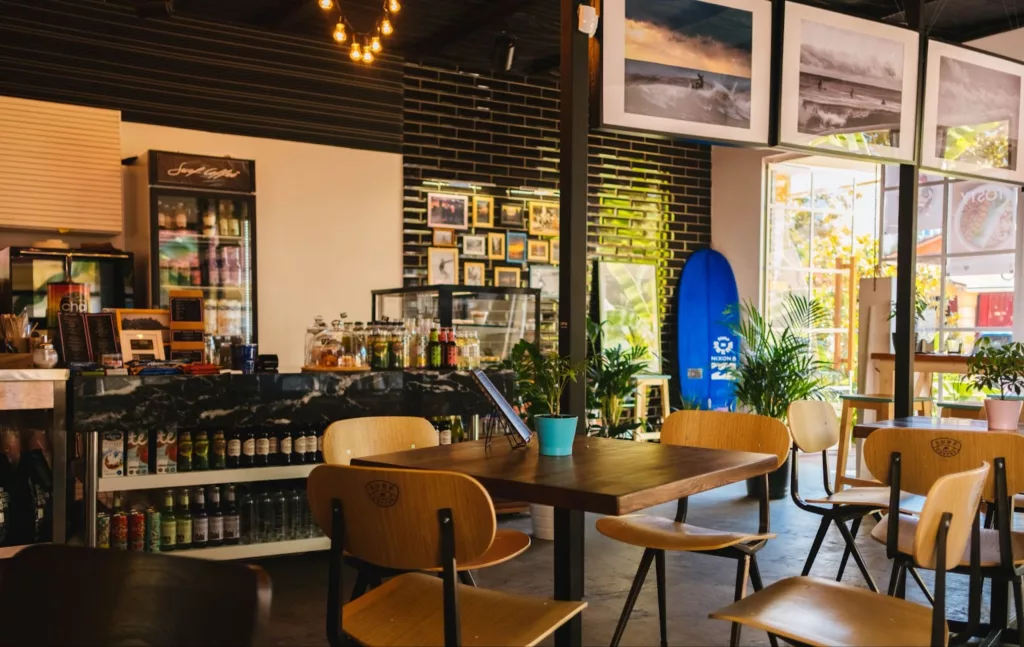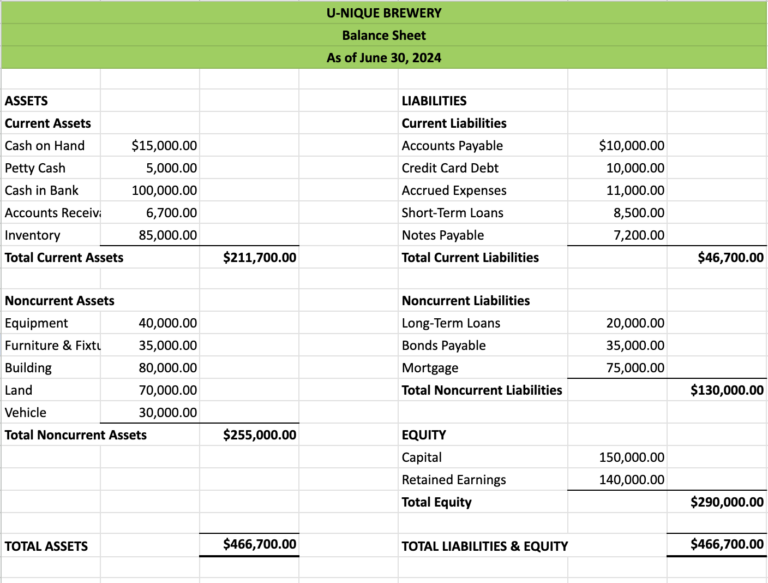The P&L For Restaurants EXPLAINED! (Plus Free Template)

Today, we’re going to chat about why keeping a close eye on your restaurant’s Profit and Loss (P&L) statement is like having a secret weapon in your restaurant business toolbox.
You might know it as an Income Statement, but no matter what you call it, this essential document spills the beans on your revenues, costs, and expenses.
And it’s an essential tool for restaurant businesses, especially, to keep a handle on costs, revenue, and cash flow.
Let’s dive into the top reasons why you should be regularly checking your P&L statement.

Why is the P&L for Restaurants So Important?
Your P&L is one of the three financial statements in your business that are essential to track as a business owner.
And when it comes to managing cash flow issues and dissecting the financial health of your business, the P&L is arguably the most important one.
Here are a few reasons why your restaurant P&L is so important to track regularly:
Keep your finger on the financial pulse:
Uncover hidden opportunities:
Your P&L statement is like a treasure map showing you where you can improve. Maybe you’re spending too much on food or labor? By pinpointing these areas, you can take action and turn things around—whether it’s negotiating better deals with suppliers, optimizing staff schedules, or tweaking your menu prices.
Measure your marketing mojo:
Wondering if that last marketing campaign was worth the investment? Your P&L statement can help! By tracking revenue growth and customer traffic, you can gauge the success of your marketing efforts and make more informed decisions for future campaigns.
Plan and predict like a pro:
Staying BFFs with your P&L statement makes budgeting and forecasting a breeze. By understanding your past financial performance, you can make educated guesses about the future and keep your restaurant sailing smoothly—even when things get a little choppy.
Stay accountable and compliant:
Keeping your P&L statement up-to-date is like having a personal financial trainer—keeping you accountable and on track. Plus, it ensures you’re in tip-top shape for tax season and financial regulations, so you can avoid any nasty surprises down the road.
Make decisions with confidence:
Last but not least, being well-acquainted with your P&L statement means you’re equipped to make data-driven decisions. With a clear picture of your financial landscape, you can confidently make choices about menu changes, staffing levels, investments, and more.
What Goes Into The P&L for Restaurants?
Now that we’ve stressed just how important it is to track your P&L, let’s break down what exactly goes into it.
Revenue
It all starts with your revenue. You might have just one item here (“Total Sales”), or you might break it down into categories like dine-in sales, takeout sales, and catering income.
All of your revenue added together is called your Gross Revenue, which comprises the money coming into your restaurant.
At the bottom of the revenue section, you’ll find your Total Revenue, which is the sum of all income sources.
One of the most important things to consider when looking at revenue is to identify trends.
Is your revenue increasing or decreasing? Does it fluctuate significantly, or is it relatively stable?
If you’re not satisfied with the answers to these questions, it might be time to revamp your marketing strategy or adjust your menu offerings and pricing to improve customer retention.
Cost of Goods Sold
The second section of the P&L is typically dedicated to Cost of Goods Sold (COGS).
This section is essential for restaurants, as it represents the prime costs of the food and beverages you sell and the labor it takes to sell/deliver them.
Calculating COGS involves tracking inventory levels and factoring in any spoilage, waste, or theft, and recording your payroll costs in the period they were earned, not paid.
Business Expenses
Next is the section for the necessary and reasonable business expenses you have for running your restaurant – things like rent, advertising, and insurance.
Pay close attention to the expense section, because you have control over many of the items here.
While you can’t avoid paying taxes or annual business license fees, you do have discretion over expenses like office supplies, software, and even staff meals.
Remember: When it comes to expenses, you are the one in control.
Other Category
After revenue and expenses, you might see “Other Income” and “Other Expenses” categories, which contain income and expense amounts that are not part of operating your restaurant.
These items generally don’t change much — often, your only Other Income item is interest income from your bank accounts, and if you have anything in Other Expenses, it’s likely just taxes and interest expense.
These items are the effects rather than the causes of significant business decisions you make: how much cash to keep in your accounts, how much to spend on assets, and how much debt to accumulate.
Net Income
Lastly, we see Net Income, which is your Total Revenue minus your Total Expenses.
Hopefully, your net income is positive or “in the black” as opposed to negative or “in the red.”
Net Income = Total Revenue – Total Expenses
Imagine you’ve hosted a large private event at your restaurant, and the total bill for the event comes to $10,000. Great, that’s $10,000 in Revenue. However, if the event organizer hasn’t paid you yet or has requested an extended payment term, you might still have $0 in cash from that event.
Make sure you have the cash in the bank to cover your expenses before you initiate payments to your vendors, even if your Net Income looks promising. Managing your cash flow carefully is crucial to maintaining a healthy restaurant business.
One last note about Net Income: It’s a key component in the formula to find your Profit Margin:
Profit Margin = Net Income / Total Revenue
Have you ever heard someone talking about “good margins” or “juicy margins?”
This refers to how pure your profit is.
In other words, what percentage of the revenue from your customers actually ends up in your pocket after all expenses are accounted for?
While some industries can see profit margins in the 20 – 30+% range, the restaurant industry struggles in this area and typically sees lower profit margins more in the 5 – 15% range, with most hitting around 5-8%.
Restaurants can often earn better profit margins by carefully managing their costs and maximizing efficiency. If you forget to pay attention to rising food costs or the amount of scrap occurring in the kitchen, you could easily see an extra 5% or more in food costs during a period which can completely wipe out your entire months profit.
While this isn’t necessarily relevant for other industries, as a ratio, profit margin is a good way in the restaurant space to compare businesses of different sizes,
We can advise you on whether your profit margin is above-average or below-average for a restaurant, and we can provide guidance on what to do if you feel unsatisfied with your margins.
Download Your SAMPLE P&L for Restaurants
Finally, the best part. You can download our sample restaurant P&L to use in your restaurant.
Note: this P&L is purely for example purposes.
You should work with your experienced restaurant accountant to customize it for your unique situation.
Need More Help With Your Restaurant P&L?
Usually, your accountant handles your restaurant’s P&L statement, using financial records and transactions to create and update it regularly.
However, it’s crucial for you, as a restaurant owner, to not only rely on your accountant but also to understand and review the P&L statement consistently.
This practice helps you make well-informed decisions about your restaurant’s financial health, pinpoint any potential issues, and uncover opportunities for growth and improvement.
If you’re seeking an accountant with restaurant experience, or simply exploring other possibilities, we’re here to help.
Feel free to schedule a brief 15-minute call with one of our knowledgeable restaurant accountants to address any questions or concerns you might have.
Until next time!



